
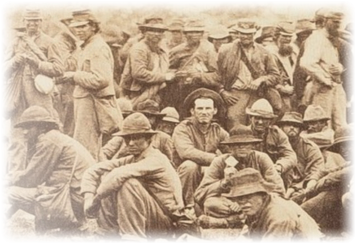
A Tale of Three Brothers
Researching
the
Civil
War
tends
to
reveal
stories
that
have
been
passed
down
to
us
from
that
most
tragic
of
times
in
our
American
history.
They
can
be
both
fascinating
as
well
as
mundane,
but
always
interesting
in
their
own
way.
As
repetitious
as
some
stories
may
seem,
to
many
of
us,
each
hold
gold
nuggets
of
history
yet
to
be
discovered.
The
following
story
does
not
stand
out
from
the
many
hundreds
that
have
made
their
way
through
time
but,
for
me,
it
stands
alone
as
this
particular
one
happened to three members of my family; brothers that I share the same last name with.
As
the
first
cannons
were
fired
at
Fort
Sumter,
South
Carolina
on
April
12,
1861,
three
brothers,
Albert
Carrington,
Daniel
Harlan,
and
Benjamin
Franklin
Crickenberger,
aged
28,
23,
and
21,
respectively,
were
living
near
each
other
in
towns
situated
in
the
heart
of
the
Shenandoah
Valley
of
Virginia;
Albert,
in
Mecaheysville,
Daniel
in
Harrisonburg,
and
Benjamin
in
Conrad
Store
(known
today
as
Elkton).
Crickenberger,
Opal.
The
Johannes
Crickenberger
Family
.
Self-published.
1996.
Pp.
28.
42.
59.
62-
64.
The
State
of
Virginia
would
soon
follow
those
that
had
seceded
and
depart
the
Union
on April 14
th
.
All
three
brothers
were
farmers
and
descendants
of
a
great-great-
grandfather,
who,
when
a
Hessian
soldier
during
the
American
Revolution,
was
captured
by
American
forces
with
his
brother,
Hans,
on
a
cold
Christmas
day
in
1776,
in
Trenton,
New
Jersey.
Johannes
Kruckeberg
would
remain
in
the
fledgling
United
States,
migrating
to
the
upper
Shenandoah
Valley
(Strausburg),
where
he
would
soon
marry
and
begin
his
family.
Crickenberger,
Opal.
The
Johannes
Crickenberger
Family
. Self-published. 1996. P.6.
On
April
18,
1861,
all
three
brothers,
as
did
several
other
members
of
the
Crickenberger
family
(seven
other
cousins,
uncles
and
brothers
would
enlist
in
infantry
regiments
and
one
artillery
battery
during
the
war),
answered
the
call
to
enlist
to
defend
their
native
State.
Albert
enlisted
in
Co.
E
(Peaked
Mountain
Grays),
Daniel,
Company
G
(Valley
Guards)
and
Benjamin
in
Company
I
(Riverton
Invincibles),
all
three
companies
would
soon
become
part
of
the
newly
designated,
10
th
Virginia
Volunteer
Infantry
presently
mustering
with
other
volunteer
companies
in
Harpers
Ferry,
Virginia.
Murphy,
Terrence
V.
10
th
Virginia Infantry.
H.E. Howard, Inc. Lynchburg, Virginia 1989. IV. P. 2.
With
the
onset
of
the
campaign
season
in
the
Spring
of
1863,
all
three
brothers
had
participated
in
several
major
battles,
and
numerous
skirmishes,
fought
by
the
Confederate
Army
of
the
Shenandoah
and
later,
by
the
Army
of
Northern
Virginia.
By
this
time,
the
Army
of
Northern
Virginia
was
once
again
on
the
move
challenging
the
newly
appointed
commander
of
the
Army
of
the
Potomac,
Major
General Joseph Hooker.
May
2,
1863,
found
the
10
th
Virginia
in
the
vicinity
of
the
Chancellor
Inn,
west
of
Fredericksburg,
marching
on
what
would
be
a
circuitous,
yet
disguised
maneuver,
planned
by
both
General’s
Robert
E.
Lee
and
Thomas
“Stonewall”
Jackson.
The
movement,
had
them
marching
from
in
front
of
the
federal
army,
to
around
its
right
flank
for
a
massive
assault.
None
of
the
men
were
aware
that
they
were
about
to
become
part
of
one
of
the
most
brilliant,
yet
daring,
attacks
perpetrated
by
both
Confederate generals in the face of an overwhelming enemy.
At
the
given
hour,
the
assault
began
as
a
rush
of
a
tidal
wave
as
the
Confederate
soldiers
crashed
through
the
forest
punctuated
by
the
familiar
“rebel
yell.”
The
movement
created
a
tempest
that
quickly
spread
surprise
and
confusion
among
the
stunned
Union
defenders,
moving
rapidly
overrunning
the
enemy
picket
lines,
over
their
breastworks
and
swarming
quickly
through
the
camps
of
the
Eleventh
Army
Corps
of
the
Army
of
the
Potomac.
The
attack
would
eventually
ebb
then
cease
due
to
darkness,
holding
the
ground
that
they
had
so
violently taken from the federal soldiers.
Even
though
the
attack
brought
success
to
Lee’s
army,
it
came
with
a
cost
to
the
10
th
Virginia.
Included
on
his
official
list
of
casualties
reported
by
the
commanding
officer
of
the
10
th
Virginia,
was
the
name
of
Albert
Crickenberger.
During
the
assault,
the
oldest
of
the
three
brothers,
had
been
critically
wounded
in
the
leg
which
caused
it
to
be
amputated.
The
wound
became
mortal,
causing
Albert
to
lose
his
life
the
same
day.
United
States
War
Department,
War
of
the
Rebellion:
Official
Records
of
the
Union
and
Confederate
Armies
.
128
vols
.
Washington,
D.C.:
Government
Printing
Office
1899.
Reprint.
Harrisburg,
Pa:
Historical
Times,
Inc.
1985. P. 1035.
Sadly,
both
of
his
brothers,
Daniel,
and
Ben,
buried
his
body
somewhere
on
the
battlefield.
It
is
recorded
within
the
family
records
that
“when
his
mother
heard
the
news
[of
Albert’s
death]
she
fainted
and
continued
to
do
so
until
late
that
night.”
Crickenberger,
Opal
.
The Johannes Crickenberger Family
. Self-published. 1996. P. 42.
The
months
that
followed
bear
record
to
the
various
skirmishes
and
maneuvering
as
both
armies
sparred
with
each
other.
The
month
of
June
witnessed
Lee’s
second
maneuver
into
the
north
in
his
attempt
to
move
the
war
and
his
army
out
of
war-torn
Virginia.
By
the
end
of
June,
the
command
of
the
Army
of
the
Potomac
was
again
changed.
As
the
Confederate
Army
of
Northern
Virginia
marched
from
Virginia,
through
Maryland
and
into
Pennsylvania,
the
Army
of
the
Potomac,
with
its
new
commander,
counter-moved
to
intercept
them.
This
time,
both
met
at
the
crossroads
town
of
Gettysburg,
Pennsylvania.
Unimagined
by
the
two
remaining
brothers,
a
highly
contested
section
of
the
battlefield
known
as
Culp’s
Hill
will
once
again
bring grief to their family.
General
Richard
Ewell,
now
in
command
of
the
2
nd
Corps,
Army
of
Northern
Virginia,
had
been
given
the
assignment
by
Lee
of
capturing
the
strategic
right
anchor
of
the
Union
Army
presently
constructing
breastworks
on
Culp’s
Hill.
During
the
early
morning
hours
of
July
2
nd
,
the
10th
Virginia
Infantry
found
itself,
with
the
rest
of
Johnson’s
Brigade,
facing
the
base
of
Culp’s
Hill.
The
hill
appeared
wooded,
rocky,
and
laden
with
stone
fences
near
its
base.
The
men
of
the
10
th
would
have
to
cross
over
Rock
Creek
first,
which
ran
at
the
base
of
the
hill,
before
climbing
what
appeared
to
be
a
foreboding
fortress
crowned
with
Union soldiers waiting for them.
The
10
th
Virginia
had
taken
most
of
the
day
fighting
its
way
up
the
precipitous
slope,
eventually
over-running
the
federal
breastworks
capturing
many
and
driving
the
Union
defenders.
Darkness
soon
ended
the
staggering
fighting
as
remnants
of
the
10
th
Virginia
and
Steuart’s
Brigade
manned
the
captured
federal
breastworks
and
prepared
for
a
federal
counterattack.
In
the
end,
the
casualty
report
submitted
by
the
10
th
Virginia,
listed
six
killed,
seventeen
wounded
and
over
twenty-four
missing
or
taken
prisoner.
Of
the
six
dead,
was
listed
the
middle
brother,
Private
Benjamin
Franklin
Crickenberger
killed
in
action
July
2
nd
in
Gettysburg,
Pennsylvania.
The
remainder
of
the
10
th
Virginia
continued
to
follow
the
Army
of
Northern
Virginia
as
it
maneuvered
and
skirmished
with
the
Army
of
the
Potomac.
As
the
Union
Army
was
content
to
spend
the
winter
in
Culpeper
County,
Virginia
on
one
side
of
the
Rapidan
River.
Lee
and
his
army
sat
on
the
opposite
side
constructing
their
winter
camps.
The
10
th
had
dubbed
their
camp
“Camp
Pisgah”
as
the
camp
was
situated
near
Pisgah
Church.
Murphy,
Terrence
V.
10
th
Virginia
Infantry.
H.E.
Howard,
Inc.
Lynchburg,
Virginia
1989. P. 86.
The
spring
of
1864
witnessed
a
renewed
effort
by
the
newly
promoted
Lieutenant-General
Ulysses
S.
Grant,
who
chose
to
travel
with
the
Army
of
the
Potomac.
Grant’s
plan
was
to
fight
Lee
as
often
as
possible,
destroying
Lee’s
army
in
the
process.
Meeting
head
on
with
Lee
in
the
area
known
as
the
“wilderness,”
without
success,
Grant
would
continue
to
sidestep
Lee’s
army
only
to
be
blocked
once
more
by
Lee
at
the
town
of
Spotsylvania
Courthouse.
There
Lee
had
his
army
entrench
to
defend
itself
against
the
Union
juggernaut
growing
in
numbers.
Lee’s
engineers
had
constructed
a
salient,
commonly
referred
to
as
“the
mule
shoe,”
as
it
protruded
from
Lee’s
lines
in
a
wide
arc
that
reached
end
to
end
on
Lee’s
entrenchments.
The
defence
of
the
salient
was
given
to
Ewell’s
Corps,
which
Steuart’s
Brigade
with
the
10
th
Virginia
Infantry
were
assigned
to
the
left
flank.
On
the
early
morning
of
hours
of
May
12,
Hancock’s
2
nd
Corps
along
with
elements
of
Burnsides
9
th
Corps,
attacked
and
overran
the
salient
with
a
sudden
rush.
Rauss
Ed.
The
Bloody
Angle.
Hell’s
Half
Acre.
The
Fight
for
the
Bloody
Angle.
May
12,
1864.
Blue
and
Gray
Magazine.
Issue 6. Volume 1. July 1984. P.42.
The
men
of
10
th
Virginia
were
either
killed,
wounded,
or
captured,
with
a
few
survivors
remaining
falling
back
to
a
secondary
defensive
line.
For
the
10
th
Virginia,
the
was
over.
Those
of
the
10
th
Virginia
that
survived
the
maelstrom
of
Spotsylvania
Courthouse,
mustered
less
than
a
one
hundred
men.
Among
the
numbers
of
those
of
the
10
th
Virginia
that
were
captured
in
this
predawn
surprise
attack,
was
the
third
remaining
brother
Daniel.
Murphy,
Terrence
V.
10
th
Virginia
Infantry.
H.E.
Howard,
Inc.
Lynchburg, Virginia 1989. Pp. 99-100.
The
prisoners
were
hustled
to
the
rear
between
a
cordon
of
jeering
Union
soldiers
and
soon
marching
under
guard
to
a
vast,
holding
area
known
as
the
“punch
bowl”
located
on
the
Potomac
River.
Daniel
and
his
fellow
prisoners
embarked
on
a
steam
boat
the
next
day,
heading
for
a
prison
camp
somewhere
in
the
north.
It
turned
out
to
be
a
short
trip
and
their
lot
to
land
at
the
wharf of Point Lookout.
Daniel
would
spend
the
next
two
months
as
a
prisoner
of
war
at
Point
Lookout.
Due
to
the
rumored
attack
on
Point
Lookout
to
release
the
prisoners,
by
Confederate
General
Bradley
Johnson,
hundreds
of
prisoners
would
be
transferred
to
other
prisons;
primarily
the
new
prison
recently
established
in
Elmira,
New
York.
Daniel
would
be
one
of
those
transferred
by
the
end
of
July
to
Elmira.
After
enduring
prison
life
for
more
than
a
year,
Daniel
was
finally
released
on
his
oath
in
June
1865.
Daniel
would
return
home
after
the
war
to
what
he
and
his
two
brothers
left
behind
when
they
joined
the
Confederate
army
four
years
prior.
He
would
pass
away
at
the
age
of
thirty-nine
due
to
congestive
heart
failure.
Crickenberger,
Opal.
The
Johannes
Crickenberger
Family
.
Self-
published. 1996. P. 42.
---------------------------------------------------------
1. Crickenberger, Opal. The Johannes Crickenberger Family. Self-published. 1996. Pp. 28. 42. 59. 62-64.
2. Crickenberger, Opal. The Johannes Crickenberger Family. Self-published. 1996. P.6.
3. Murphy, Terrence V. 10
th
Virginia Infantry. H.E. Howard, Inc. Lynchburg, Virginia 1989. IV. P. 2.
4. United States War Department, War of the Rebellion: Official Records of the Union and Confederate Armies. 128 vols.
Washington, D.C.: Government Printing Office 1899. Reprint. Harrisburg, Pa: Historical Times, Inc. 1985. P. 1035.
5. Crickenberger, Opal. The Johannes Crickenberger Family. Self-published. 1996. P. 42.
6. Murphy, Terrence V. 10
th
Virginia Infantry. H.E. Howard, Inc. Lynchburg, Virginia 1989. P. 86.
7. Rauss Ed. The Bloody Angle. Hell’s Half Acre. The Fight for the Bloody Angle. May 12, 1864. Blue and Gray
Magazine. Issue 6. Volume 1. July 1984. P.42.
8. Murphy, Terrence V. 10
th
Virginia Infantry. H.E. Howard, Inc. Lynchburg, Virginia 1989. Pp. 99-100.
9. Crickenberger, Opal. The Johannes Crickenberger Family. Self-published. 1996. P. 42.
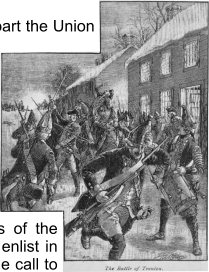
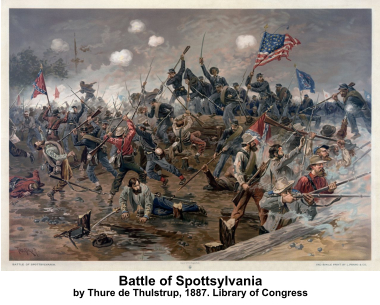
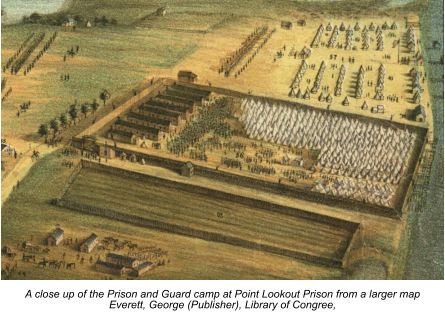
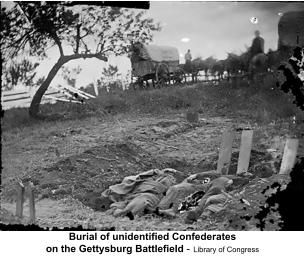
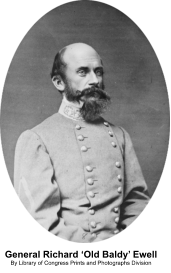
Copyright © 2025 Robert E Crickenberger
Point Lookout, Maryland:
The Largest Civil War Prison
By Robert E. Crickenberger
A Groundbreaking Book That Rewrites the Legacy
of the Union’s Most Infamous POW Camp
July 1863 – August 1865












